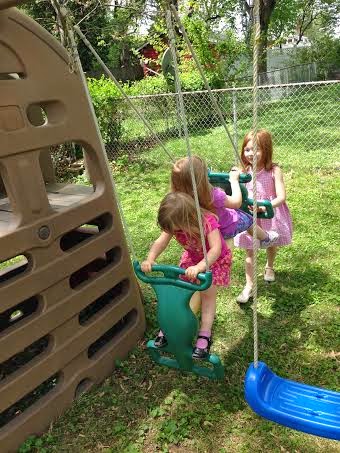Back in April, I talked about therapeutic limit setting. We went through some examples of limit setting, using basic play scenarios. Once your child is comfortable and used to this method of gaining power through choice, it is time to initiate consequences and rewards. This is the part that really pulls it all together. This is where your child will learn the foundation of right and wrong decision making and the results that go along with his actions. I caution you from moving from limit setting during play to this aspect too quickly. It is not a race. You want your child to understand, not simply be coerced.
Limit Setting With Consequences
Think about your child in 10-15 years. He is 17, in his first car, goofing off with his friends. He comes up to a straight away on the highway and in that very moment has to choose from right and wrong. Speed limit or drag strip? What you teach him right now at 2-5 years old can guide him to pick speed limit.
Give big choices to big kids and little choices to little kids. Do not expect your 3-year-old to understand the consequences of major things. Keep it small. If you choose to fight with your sister… if you choose to not pick up your PJs … if you choose to throw your food… These are small, definitive items. An older child will be more equipped to handle a bigger choice like choosing to not have an attitude.
Not following the directions given results in the child choosing the consequence. Period. If you choose [good behavior] then you choose [reward.] When you choose [bad behavior] then you choose [consequence.] Just like in play therapy, use the word CHOOSE/CHOICE 4 times. The reward does not have to be something like candy or stickers or a fancy chart. The reward is simply the positive outcome of avoiding the consequence. If the consequence is losing TV for an hour then the reward is NOT losing TV for an hour.
Consequences are chosen at that very moment by your child. No second chances. No do overs. This may seem harsh for young children. This may result in crying. Prepare yourself. Remember to be your child’s thermostat. Remind your child that his actions lead to the consequence. It was HIS CHOICE.
When your 17-year-old makes the choice to turn the highway into a drag strip, he makes the choice to accept the speeding ticket when he is caught. He makes the choice to live with the damage to his car or worse if he crashes. The choice is made at that very moment that he drives 50 mph over the speed limit. He cannot rewind time if something bad happens.
The format is similar to what you’ve been practicing: “If you choose to argue in the car with your sister, then you choose to not have TV after dinner. It’s your choice.” There is no need to break up the arguing if it continues in the car. When you get home and the child asks for TV, explain, “You had a choice to stop fighting and keep TV or the choice to lose TV if the fighting continued. You chose to fight so you choose to not have TV tonight.” Do not apologize. State the rule matter-of-factly and attempt to move on. Like I said, there will be crying. Use this time to give your child choices on alternatives he can choose. “You are upset. There is no TV. You can choose to play with these blocks or you can choose to draw a picture. It’s your choice.” The next day, if arguing starts again, reapply the same rule. THEY WILL LEARN.
The earlier you child learns that his choices directly impacts the consequences, the better. Do not wait until you have teenagers to instill this responsibility in your children. They will not be receptive to these choices if you’ve let them get away without consequence for over a decade.
Learning these methods has been extremely helpful in my naturally minded parenting. If they weren’t working in my own home, I would definitely not waste my time sharing them with you. Please, if you have any questions, do not hesitate to comment below.
After limit setting, how are you able to start setting consequences and rewards with your child?
Let’s connect on social media too:
Mumbling Mommy on Facebook
Mumbling Mommy on Twitter
Mumbling Mommy on Pinterest
Category: KidsTags: consequences









